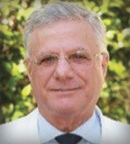In the treatment of newly diagnosed locally advanced rectal cancer, two phase II studies evaluating the addition of the PD-L1 inhibitor avelumab to chemoradiotherapy showed promising rates of pathologic complete response, major pathologic response, and tumor downstaging. The study investigators reported these findings at the ESMO World Congress on Gastrointestinal Cancer 2021.1,2
Preoperative chemoradiotherapy is the standard of care in the management of locally advanced rectal cancer. Radiotherapy can induce antigen release from a low neoantigen-burden tumor (such as mismatch repair–proficient [pMMR] colorectal cancer) and activate dendritic cells, leading to a CD8-positive T-lymphocyte–mediated anticancer immune response. Neoadjuvant chemoradiotherapy increases PD-L1 expression in tumor cells, making them potentially amenable to PD-1/PD-L1 inhibition. The sequential use of anti–PD-1/PD-L1 antibodies after radiation therapy appears to be synergistic in animal models, suggesting nonirradiated areas may also derive benefit by combining these two modalities.
Those observations formed the basis of the studies evaluating avelumab. The trials were similar, but one gave a short course and the other a long course of radiation therapy. Short-course radiation therapy plus chemotherapy delivered as part of total neoadjuvant therapy in the Averectal trial was associated with a pathologic complete response rate of 37.5% and a major pathologic response rate of 67.5%.1 In the AVANA trial, which involved the more conventional long-course radiation schedule, the pathologic complete response rate was 23%, and 60% of patients achieved a major pathologic response.2
Averectal Trial: Total Neoadjuvant Therapy Plus Avelumab
Total neoadjuvant therapy for locally advanced rectal cancer has gained favor based on higher pathologic complete response rates, less distant failure, and improved treatment compliance than seen with traditional fluoropyrimidine-based chemoradiation followed by surgery and adjuvant chemotherapy. The multicenter single-arm open-label Averectal trial, conducted in Lebanon and Jordan, enrolled 44 patients (65% male; median age, 58), mostly with T3–4 N+ tumors, to test whether avelumab might improve upon total neoadjuvant therapy without it.1
A total of 40 patients received at least one course of short-course radiation therapy (25 Gy in 5 fractions) followed by six cycles of modified FOLFOX-6 (oxaliplatin, fluorouracil, leucovorin) plus avelumab, followed 3 to 4 weeks later by total mesorectal excision. The surgical specimen was examined for PD-L1 expression and CD4-positive, CD8-positive, and CD3-positive T-cell infiltration, with tumor regression grade (TRG) determined. Surgery was completed by all but one patient.
The primary endpoint was pathologic complete response (TRG0) as compared with a historical control cohort. TRG0 indicated no viable cells in the tumor bed; TRG1 indicated less than 10%; TRG 2 indicated 10% to 50%; and TRG3 indicated more than 50%. TRG0 and TRG1 status correlated significantly with overall survival.

Ali Shamseddine, MD
A pathologic complete response was achieved by 15 of 40 patients (37.5%), which is significantly higher than the 16% in historical controls (P = .025). In addition, 12 patients (30%) achieved a near-complete response (TRG1), and thus, 27 patients (67.5%) had a major pathologic response (TRG0 or TRG1), reported Ali Shamseddine, MD, of the American University of Beirut Medical Center in Lebanon.1
“Based on this analysis, the primary endpoint was successfully met—a significant improvement in pathologic complete response (37.5%)—and a high major pathologic response rate in the setting of an acceptable safety profile,” he said.
Noting that survival in rectal cancer is driven by post-therapy pathologic stage, Dr. Shamseddine reported that of 35 patients with T3 or T4 node-positive tumors, 6 (17%) were downstaged to T1–T2N0, and 13 (37%) were downstaged to T0N0.
The investigators also correlated response with the patients’ Immunoscore, a profile based on the densities of CD3-positive and CD8-positive cells at the tumor margin and within the core of the tumor at the initial biopsy (day 10). The numbers were transformed to percentiles, with their means calculated and converted into Immunoscores. Analysis showed a statistically significant difference between TRG0 and TRG2, where a high Immunoscore at baseline was significantly associated with (ie, predictive of) higher pathologic complete responses as compared with lower Immunoscores (P = .045). “This finding warrants further study in a larger cohort,” he added.
In the safety analysis, 43 of 242 adverse events (18%) were serious; they were mostly grade 3 and considered unrelated to avelumab. Approximately 90% of serious adverse events resolved without sequalae.
KEY POINTS
- Two open-label, single-arm, phase II studies (Averectal and AVANA) evaluated the PD-L1 inhibitor avelumab plus chemoradiotherapy as neoadjuvant therapy for locally advanced rectal cancer.
- In the Averectal trial, short-course radiation plus chemotherapy, delivered as part of total neoadjuvant therapy, was associated with a pathologic complete response rate of 37.5% and a major pathologic response rate of 67.5%.
- In the AVANA trial, which involved the more conventional long-course radiation schedule, the pathologic complete response rate was 23%, and 60% of patients achieved a major pathologic response.
AVANA Trial: Conventional Chemoradiotherapy Plus Avelumab
The Italian multicenter, phase II AVANA trial included 101 patients (median age, 63; 61% were male; 89% with cT3–4 and 94% with node-positive disease) with resectable locally advanced rectal cancer.2 Treatment included standard preoperative chemoradiotherapy with capecitabine at 825 mg/m2 for 5 days/week plus 50.4 Gy in 28 fractions over 5.5 weeks along with 6 cycles of avelumab at 10 mg/kg every 2 weeks. Total mesorectal excision was performed 8 to 10 weeks after the end of chemoradiotherapy. Adjuvant chemotherapy was given according to pathologic response.
The primary endpoint was pathologic complete response, defined as complete histologic regression with no available tumor cells. By the statistical design, the experimental regimen would be considered for further studies if at least 22 patients attained a pathologic complete response.
Of 100 patients evaluable for pathologic response, 23 achieved a pathologic complete response, and 60 patients reached a major pathologic response, meeting the primary endpoint and qualifying the regimen for further study, reported Lisa Salvatore, MD, of the Comprehensive Cancer Center, Medical Oncology, Fondazione Policlinico Universitario Agostino Gemelli, IRCCS, Rome.
“After treatment, we observed a decrease in the rate of T3–4 tumors, from 89% initially to 36%, and a decrease in the proportion of positive lymph nodes, from 94% to 21%,” she further reported.
Of 62 patients with known microsatellite instability (MSI) status, 2 had MSI-high tumors, and 1 (50%) achieved a pathologic complete response. Among the 60 patients with pMMR (not MSI-high) tumors, 8% achieved a pathologic complete response, and 69% achieved a major pathologic response.
Adverse events of any grade were observed in 65%, of which 8% were grade 3 or 4, mainly diarrhea (3%). Immune-related adverse events of any grade occurred in 18%, which were grade ≥ 3 in 4%, most frequently skin reactions.

Lisa Salvatore, MD
“The combination of preoperative chemoradiotherapy plus avelumab showed promising activity and a feasible safety profile,” Dr. Salvatore said. “We are waiting for disease-free and overall survival results after longer follow-up. There is still a lot to learn from the AVANA study. Translational analyses on biologic samples are ongoing to identify patients more likely to benefit from the combination of chemoradiotherapy plus avelumab.”
DISCLOSURE: Dr. Shamseddine has served as a consultant or advisor to Bayer; has participated in a speakers bureau for Amgen, Bayer, Merck, MSD, Novartis, Pfizer, and Sanofi; has received research funding from Bristol Myers Squibb, Bristol Myers Squibb/Medarex, and Merck; and has been reimbursed for travel, accommodations, or other expenses by Algorithm, Amgen, Merck, and MSD. Dr. Salvatore has received honoraria from Amgen, AstraZeneca, Bayer, Merck Serono, Pierre Fabre, Roche, Sanofi, and Servier; has served as a consultant or advisor to Amgen, AstraZeneca, Bayer, Merck Serono, Pierre Fabre, Roche, Sanofi, and Servier; and has been reimbursed for travel, accommodations, or other expenses by Bayer, Celgene, Merck Serono, Roche, Servier, and Sanofi.
REFERENCES
1. Shamseddine A, Zeidan YH, Bouferraa Y, et al: Oncodistinct study #5: Efficacy and safety of neoadjuvant short-course radiation followed by mFOLFOX-6 plus avelumab for locally advanced rectal adenocarcinoma: Averectal study. ESMO World Gastrointestinal Cancer Congress 2021. Abstract SO-30. Presented July 1, 2021.
2. Salvatore L, Bensi M, Corallo S, et al: Phase II study of preoperative chemoradiotherapy plus avelumab in patients with locally advanced rectal cancer: The AVANA Study. ESMO World Gastrointestinal Cancer Congress 2021. Abstract O-12. Presented July 1, 2021.

